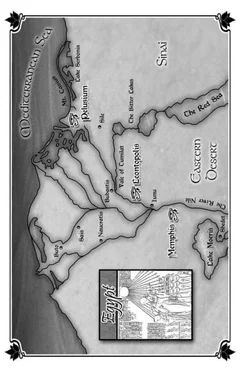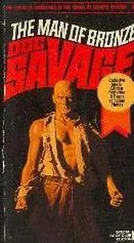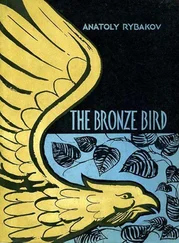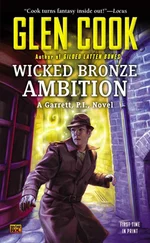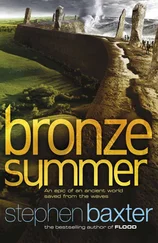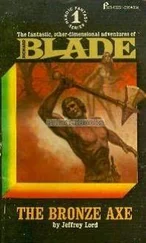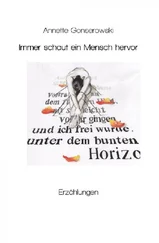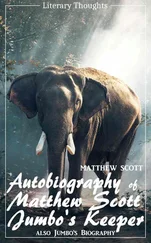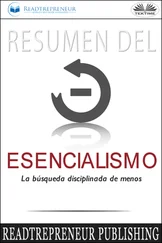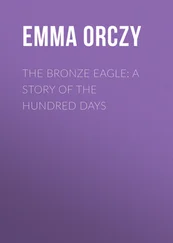Scott Oden - Men of Bronze
Здесь есть возможность читать онлайн «Scott Oden - Men of Bronze» весь текст электронной книги совершенно бесплатно (целиком полную версию без сокращений). В некоторых случаях можно слушать аудио, скачать через торрент в формате fb2 и присутствует краткое содержание. Жанр: Исторические приключения, на английском языке. Описание произведения, (предисловие) а так же отзывы посетителей доступны на портале библиотеки ЛибКат.
- Название:Men of Bronze
- Автор:
- Жанр:
- Год:неизвестен
- ISBN:нет данных
- Рейтинг книги:3 / 5. Голосов: 1
-
Избранное:Добавить в избранное
- Отзывы:
-
Ваша оценка:
- 60
- 1
- 2
- 3
- 4
- 5
Men of Bronze: краткое содержание, описание и аннотация
Предлагаем к чтению аннотацию, описание, краткое содержание или предисловие (зависит от того, что написал сам автор книги «Men of Bronze»). Если вы не нашли необходимую информацию о книге — напишите в комментариях, мы постараемся отыскать её.
Men of Bronze — читать онлайн бесплатно полную книгу (весь текст) целиком
Ниже представлен текст книги, разбитый по страницам. Система сохранения места последней прочитанной страницы, позволяет с удобством читать онлайн бесплатно книгу «Men of Bronze», без необходимости каждый раз заново искать на чём Вы остановились. Поставьте закладку, и сможете в любой момент перейти на страницу, на которой закончили чтение.
Интервал:
Закладка:
Panoplia
(Greek "war gear.") One of the many terms used by the Greeks to describe a complete set of armor and weapons. The panoplia of the average hoplite (q.v.) of the 6th century BCE included: a Corinthian helmet (q.v.), a bronze breastplate, bronze greaves to cover the leg from the knee down, a leather kilt reinforced with bronze studs, a bowl-shaped shield some three feet in diameter, a six-to-eight-foot-long spear, and a sword. The whole ensemble weighed close to seventy pounds, and though it afforded its wearer an unheard of level of protection, a man in full panoplia wasn't invulnerable; he could still receive fatal wounds in the neck, groin, and thigh.
Papyrus
(Egyptian djet.) The papyrus plant (Latin Cyperus papyrus) grew in abundance in the Nile valley and the marshes of the Delta, where it was used in the manufacture of rope, matting, baskets, sandals, and small boats. Its most celebrated use, though, was as a writing surface. Because papyrus was expensive to produce, it was reserved for religious texts and more important secular documents.
Peltasts
Originally, the term `peltast' applied only to Thracian tribesmen who fought in their native dress — cloak, boots, a fox skin cap, javelins, and a wickerwork shield called a peltal — but it became a generic catch-all term for any lightly armed infantry, including archers. Greek generals often employed peltasts to guard the vulnerable flanks of their phalanx (q.v.), or as skirmishers against enemy infantry and cavalry. See hoplites.
Phalanx
A formation of heavily armed and armored infantry, of variable length and usually a minimum of eight men deep, designed to decimate enemy soldiers through collision and shock (Greek othismos). Hoplites (q.v.) in a phalanx stood shoulder to shoulder, their shields interleaved, with the first three ranks of spears leveled to present a veritable hedge of cornel-wood and iron. They advanced to the music of flutes and horns, increasing speed as they neared their target; by the moment of impact, the phalanx was often moving at a run. This collision could obliterate a lesser armed force.
Though dangerous to face, a phalanx was by no means invulnerable. The formation could withstand cavalry attacks, but it was too slow to be a threat to massed horsemen. Also, the unshielded right flank of the phalanx was particularly susceptible to attack. Phalanx battles seldom lasted more than an hour or two.
Pharaoh
(Egyptian Per-a'a.) The title of Egypt's king, though originally the word signified the royal residence (much as modern Americans use `the White House' when referring to the President). Pharaoh was considered a living god, an embodiment of Horus (q.v.) and the literal son of Ra (q.v.). Like his brother and sister gods, Pharaoh was responsible for creating order from chaos. To make his will a reality, a vast bureaucracy grew around the throne, scribes and courtiers, priests and generals, all ideally working for the good of the land, for the good of Pharaoh, and for the good of the gods. This system of government worked only while the king could assert his authority. Weak pharaohs brought on the rapid dissolution of centralized power, and the inevitable civil wars as their successors sought to reestablish control.
Pillars of Herakles
The ancient name for the Straits of Gibralter, linking the Mediterranean with the Atlantic Ocean.
Polemarch
Greek term for an officer in command of an army. In Men of Bronze, it is used to denote the rank directly beneath that of strategos (q.v.).
Precepts of Ptah-hotep
A didactic (or wisdom) manuscript dating to the Fifth Dynasty (2494–2345 BCE), which remained popular throughout Egypt's history. Ptah-hotep, a vizier and sage, extolled those virtues the gods find most pleasing: modesty, humility, truthfulness, selfcontrol, tact, and basic good manners. His Precepts offered advice on how best to deal with ones inferiors, peers, and superiors while remaining true to the spirit of ma at (q.v.).
Ptah
The patron god of craftsmen, who the Greeks identified with their own Hephaestus, held by the people of Memphis to have created the world, bringing it into being by thought and word alone. For the Egyptians, the heart contained the source of all intellect, which the tongue then articulated to make real. Ptah, by reciting a litany of names, produced Egypt, from its gods to its smallest grains of sand. The subtlety of Ptah's cosmogony made him somewhat obscure to the average Egyptian, whose understanding of the universe was limited by what they could see around them. Statues depicting Ptah showed an enigmatic man in the wrappings of a mummy, wearing a broad collar and holding the scepter of power.
Pylons
(Egyptian bekhnet.) The twin-towered gateways set into the walls of Egyptian temples, often decorated with carvings and reliefs of the gods and Pharaoh. The pylons mimicked the shape of the hieroglyph representing the horizon, the akhet, symbolizing the removal of the temple's sacred heartland from the physical world. They also served the more mundane function of guarding access to the temple grounds. A single temple could boast numerous pylons, each named for the ruler who ordered it built. The ruin of Amon's temple at Thebes (q.v.), Egypt's largest existing religious structure, has twelve.
Ra
Egypt's primary solar deity, who absorbed the attributes of many lesser gods before becoming fused with Amon (q.v.) by a process called syncretism. Ra, and later Amon-Ra, regulated the passing of hours, days, and years; seasons were his domain, and his energy and light made all life possible. During the Old Kingdom (2686–2125 BCE) it became widely accepted that Egypt's kings were the physical sons of Ra, a concept that remained constant throughout the nation's history. The god took many forms, from a solar disk to a sacred beetle (scarab) to a man with the head of a falcon. Ra's cult center was at lunu (q.v.).
Royal Titular
The formal, five part name used by Pharaoh to signify his connection to the gods and his divine purpose. The parts of the titular were: the Horus name, linking Pharaoh as the true representative of Horus on earth; the Nebti, or Two Ladies, name; the Golden Horus name, signifying Pharaoh's divinity; the Nisut-Bit name, often preceded by the phrase "king of Upper and Lower Egypt", was the first cartouche name (Latin praenomen) and it was given to the king at coronation; finally, the Si-Ra name, "Beloved of Ra", the second cartouche name (Latin nomen) and often the king's own birth name. When expressed as a whole, the royal titular and its related epithets formed a kind of litany describing Pharaoh's strengths and the intended direction of his reign.
Sacred Flame
A primary component in the worship of the Persian god Ahuramazda (q.v.) was fire. The Sacred Flame, the light of divine Ahuramazda, was the ultimate expression of purity; nothing could be obscured in its glow, and the powers of Darkness, called "the Lie" could not suffer to be in its presence. The Sacred Flame accompanied the king on his travels and expeditions, along with a small army of priests to tend it, insuring a constant link with the divine heart of the god.
Sah
The "Fleet-Footed Long-Strider"; that constellation of stars known to the Greeks as Orion, the Huntsman.
Saqqara
The sprawling desert necropolis outside Memphis that has served as final resting place for kings and commoners throughout Egypt's long history. The Step Pyramid of Djoser dominates the area, the first Egyptian pyramid and one of the earliest stone buildings of its size in the world; countless other smaller pyramid complexes and mortuary temples surround it. Humans weren't Saqqara's only inhabitants. Animals had their place, as well, from the tombs of the Apis bulls in the Serapeum (q.v.), to the mummified cats entombed in the eastern cliff-face (a site known today as Abwab el-Qotat, the Doorways of the Cats).
Читать дальшеИнтервал:
Закладка:
Похожие книги на «Men of Bronze»
Представляем Вашему вниманию похожие книги на «Men of Bronze» списком для выбора. Мы отобрали схожую по названию и смыслу литературу в надежде предоставить читателям больше вариантов отыскать новые, интересные, ещё непрочитанные произведения.
Обсуждение, отзывы о книге «Men of Bronze» и просто собственные мнения читателей. Оставьте ваши комментарии, напишите, что Вы думаете о произведении, его смысле или главных героях. Укажите что конкретно понравилось, а что нет, и почему Вы так считаете.
